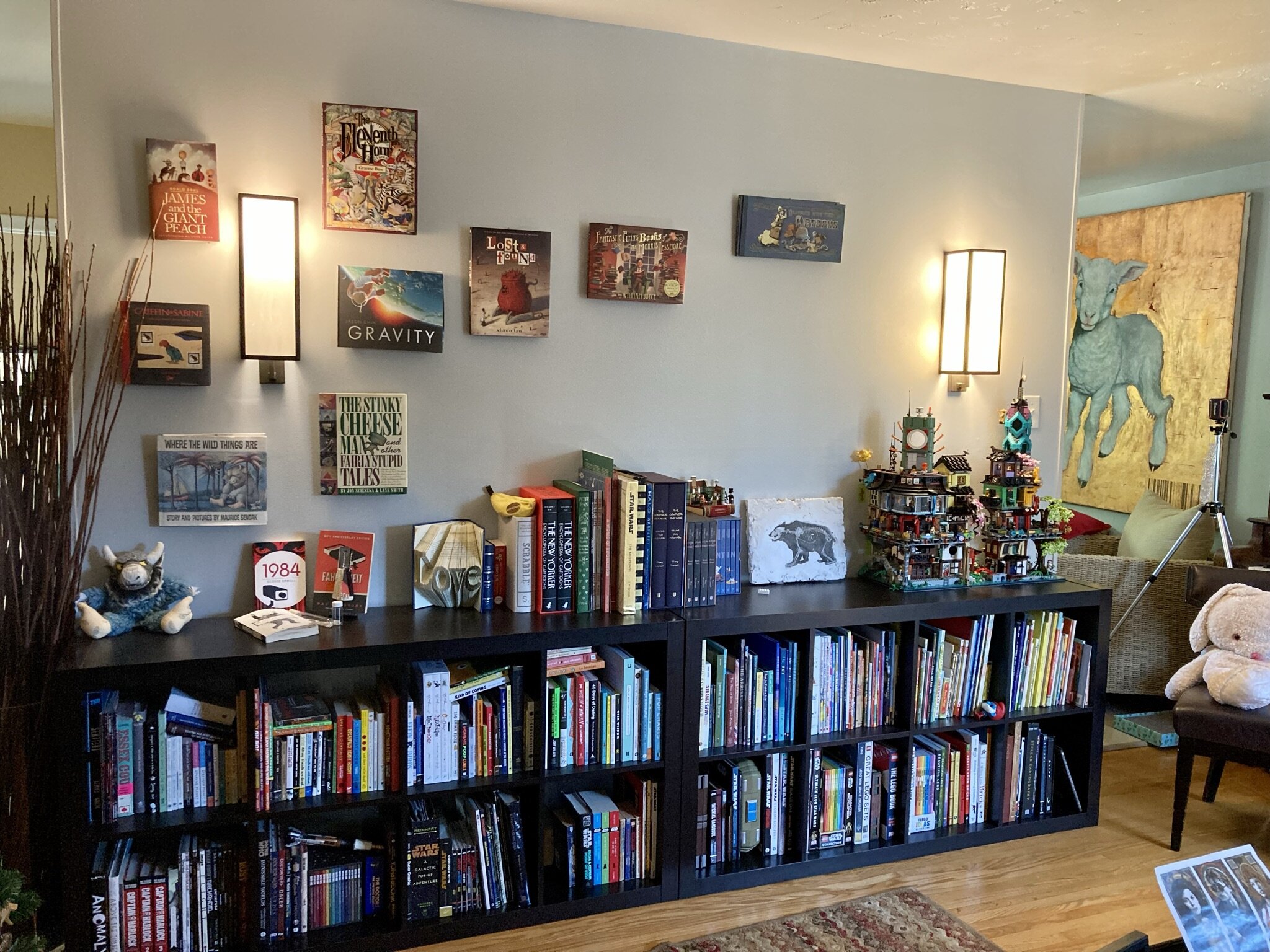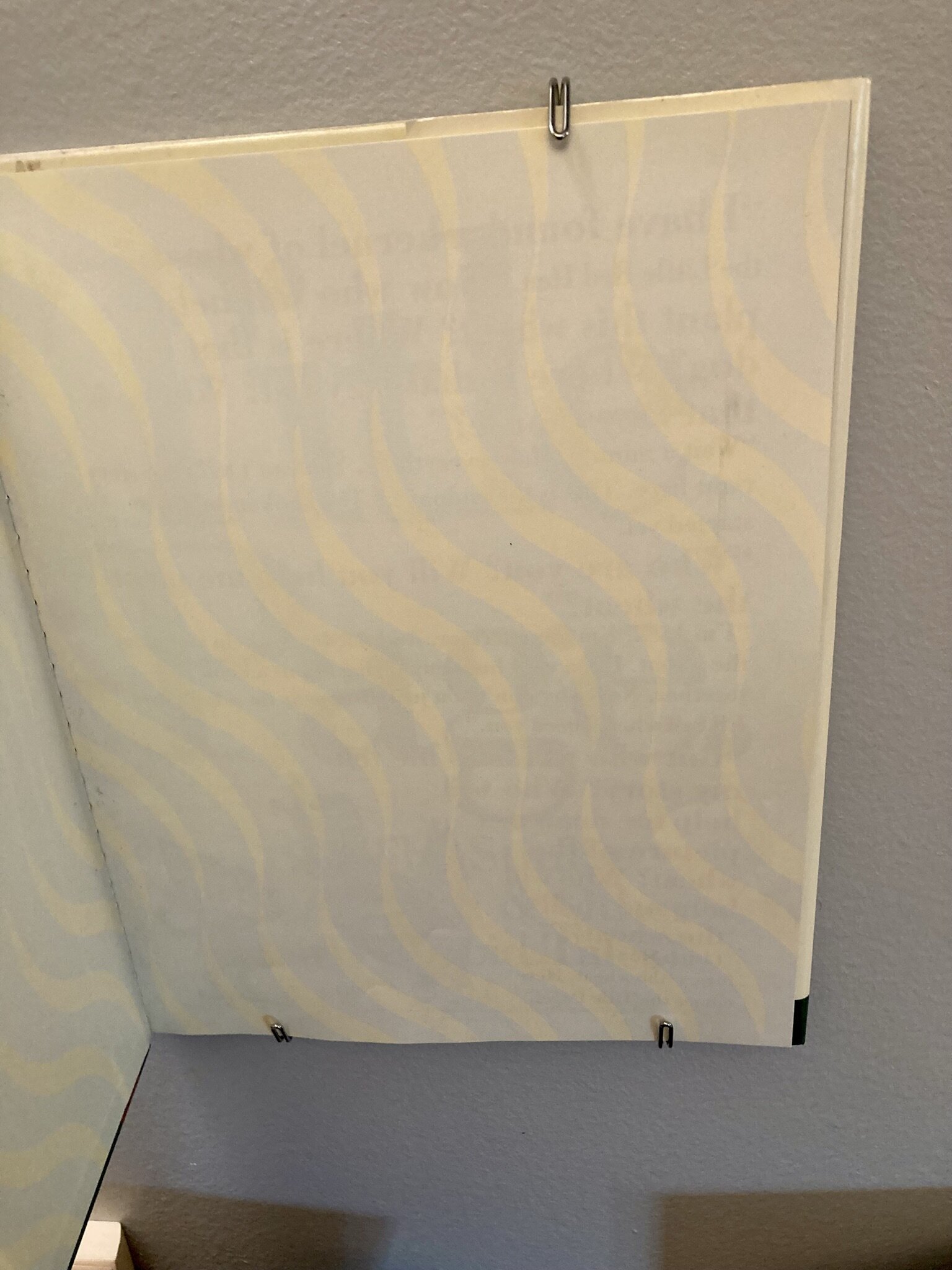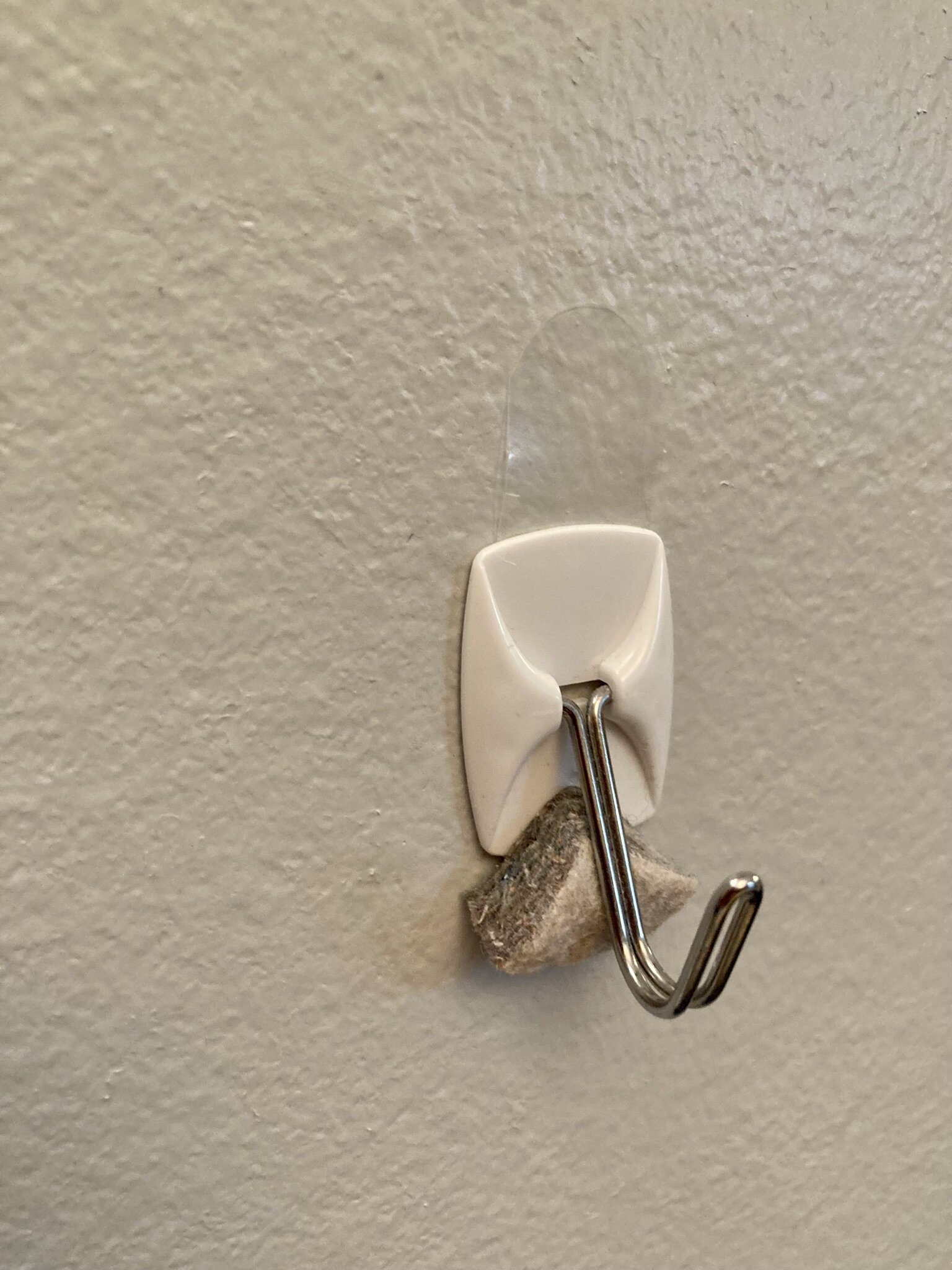Books as Wall Art: A Practical Guide
This year is the tenth anniversary of When Words Collide, an annual readers and writers conference based in Calgary, Alberta, with this being the second year it has run virtually. Today I had the privilege and joy of delivering an encore presentation of my session on Books as Object, Sculpture, and Performance to a small but mighty audience (a link to the video is now available here!).
This post is not about that presentation.
But it was sparked by it, and by the following photo in my slide deck…
The “feature” wall of the front room of Butterflies & Aliens North…
I was making the point that it is perfectly valid to appreciate books as art objects and display them as such. But the interest from the audience was clearly not in why I would hang them that way, but how.
The short answer? The 3M Command Utensil Hook.
A close up of one of the 3M Command Utensil Hooks I use as book-wall-mounting hardware (with a dirty beat up LEGO brick for scale… it’s the one I always keep in my pocket for this purpose, but not usually seen so close up!)
Each book is held up by three of these utensil hooks, two along the bottom and one on top, along with some sort of hack to help keep the front cover from falling open. Let’s take a closer look…
Closer…
…down a bit…
…and here we are, Jon Scieszka and Lane Smith’s The Stinky Cheese Man and Other Fairly Stupid Tales!
As we zoom in, I should definitely give a shout out to Gravity by Jason Chin since it is that book, and that book cover, that actually inspired this project. I was with my kids at their school’s Scholastic Book Fair when I saw the cover of Gravity and thought, wow, that would look amazing hung up on a wall. Then I thought, huh, that would look amazing hung up on a wall. And one thought led to another…
So this is a close up of the hook at the top of The Stinky Cheese Man, mounted upside down on the wall, its only function to keep the book from tipping forward. Note how I use the dust jacket flap to help hold the front cover in but still keep the hook hidden.
Close up of the top hook.
Similar thing on the bottom, only with two hooks to carry the weight and keep the book level. You might also have noticed an extra chunk of something fuzzy under each hook… more on that in a moment.
Close up of the bottom hooks. Note again how the inside flap of the dust jacket is tucked into the hook behind the cover.
With the cover open, you can see the placement of the three hooks, the top one offset to the right in order to catch the dust jacket flap. Then their placement on the wall, with the book removed…
The hooks revealed!
Note again the upside down placement of the top hook, and also how the 3M tape on the bottom hooks is pointing up to conceal the removal flap behind the book.
The installation is straightforward and forgiving, although having some spare 3M adhesive strips is probably a good idea. At time of publishing, a three-pack was selling for CAD$5.29 and included four strips, allowing for one mistake or adjustment, but fortunately refill packs of the adhesive strips are also available.
I would start by eyeballing where I wanted the book on the wall, then eyeball-install the bottom left hook. Approximate placement works fine at this point. Next I would use a level to install the bottom right hook, with again not a lot of precision required… just make sure the inside flap of the dust jacket, if there is one, will overlap.
Then to install the top clip, I would install the adhesive strip on the hook, hang the hook loosely on the top edge of the book, place the bottom of the book in the previously-installed bottom two hooks, and then just tilt it up into place.
Note also that my overall design for the books on the wall gave me some extra latitude in the placement. Inspired by one of the books included in my wall collection, The Fantastic Flying Books of Mr. Morris Lessmore, the practical bonus benefit was not having to fit to a grid… or even needing to be perfectly level.
The biggest challenge for me ended up being how to keep the front covers from falling open, while still keeping the books intact and relatively easy to remove for reading and sharing. I came up with a number of different, definitely improvised, solutions…
For a number of the books, I cut up some adhesive felt pads, normally used to keep your furniture from scratching your floors, and stuck them under the bottom hooks. This pushed the bottom of the book outward and leaned the book back into the wall.
Behind one of the books, I ended up 3M Command Velcro’ing a half a wine cork to force the bottom of the book outward.
For Jason Chin’s Gravity, the only softcover on the wall, I did use a felt pad but mostly it has just sagged into place.
And for one of the books, Brian Kesinger’s Traveling With Your Octopus, I ended up going totally low tech…
Do you see it?
It’s a black twist-tie…
Close up of the very high tech cover retention system in operation…
Close up of the very high tech cover retention system on standby…
Now in anticipation of the possible questions and concerns, no, this is definitely not an archival or gentle form of book storage. The books I have had on my wall do end up showing extra wear along the contact points with the hooks, especially if I have pulled them down a few times to re-read, and gravity acts all the more on that which attempts to fly. There is extra strain on the spines and the books end up being a bit strangely distorted when removed from the wall.
But in the end I will argue there is something to be said for a well-loved book, in whatever way that you love it, display it, and share it. I hope this might inspire you to try something different with your collection.
Happy home decorating!
– Winston
















